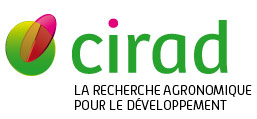Induction and identification of useful mutations for root quality traits in cassava
Sanchez T., Roserob A., Tofino A.P., Denyer K., Smith A.M., Ceballos H., Dufour D., Morante N., Pûˋrez J.C.. 2009. In : G.Y. Shu(ed.). Induced Plant Mutations in the Genomics Era : Proceeding of the International Symposium on Induced Mutations in Plants (ISIM), Vienna, Austria, 12-15 August 2008. Rome ; FAO, 2009. - ISBN : s.n., p. 266-269.
A population of about 1,500 M2 genotypes (from five different cassava families), were screened for relevant traits. Roots could be harvested from 800 of these genotypes and thoroughly screened for starch quality traits. Four distinctive phenotypes were identified: a small granule, high-amylose starch mutation with almost no paste viscosity, a group of genotypes with tolerance to post-harvest physiological deterioration, a "hollow" starch granule mutation with intermediate viscosity peaks, and a group of genotypes with a starchless (potentially "sugary") root mutation. The last two mutations need to be further characterized and confirmed. The small granule mutation has been fully characterized and a lesion in the isoamylase one or two loci has been postulated to be the most likely site. The frequency of this mutation (present in two lineages out of the 800 M2 genotypes analyzed) suggests that mutation at the putative locus is easy to attain, or else that the repair mechanisms are less efficient at that site. Several of these unusual phenotypes identified offer important commercial advantages.
Mots-clûˋs : manihot esculenta; colombie
Documents associûˋs
Chapitre d'ouvrage
Agents Cirad, auteurs de cette publication :
- Dufour Dominique — Persyst / UMR QUALISUD
